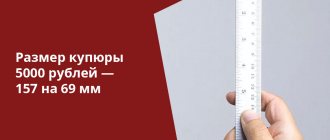ST 186 of the Criminal Code of the Russian Federation.
1. Production for the purpose of sale of counterfeit bank notes of the Central Bank of the Russian Federation, metal coins, government securities or other securities in the currency of the Russian Federation or foreign currency or securities in foreign currency, as well as storage, transportation for the purpose of sale and sale of obviously counterfeit bank notes of the Central Bank of the Russian Federation, metal coins, government securities or other securities in the currency of the Russian Federation or foreign currency or securities in foreign currency - are punishable by forced labor for a term of up to five years or by imprisonment for a term of up to eight years with a fine of in the amount of up to one million rubles or in the amount of wages or other income of the convicted person for a period of up to five years or without it.
2. The same acts, committed on a large scale, are punishable by imprisonment for a term of up to twelve years with a fine in the amount of up to one million rubles or in the amount of the wages or other income of the convicted person for a period of up to five years, or without it and with restriction of freedom for for a period of up to one year or without it.
3. Acts provided for in parts one or two of this article, committed by an organized group, are punishable by imprisonment for a term of up to fifteen years with or without a fine in the amount of up to one million rubles or in the amount of the wages or other income of the convicted person for a period of up to five years. and with or without restriction of freedom for a term of up to two years.
Commentary to Art. 186 Criminal Code
1. The subject of the crime does not include: banknotes and securities withdrawn from circulation (old coins, Soviet money abolished by monetary reforms, etc.) and having only collection value; a cash and clothing lottery ticket, since it is not a security, its counterfeit for the purpose of sale or illegal receipt of winnings is qualified as preparation for fraud.
2. The objective side is characterized by the commission of the following alternative actions: production, storage, transportation and sale of products of the crime.
3. The crime consists of both partial counterfeiting of banknotes or securities (alteration of the denomination of a genuine banknote, falsification of the number, series of a bond and other details of money and securities), and the production of completely counterfeit money and securities.
When deciding the presence or absence of a crime in a person’s actions under Art. 186 of the Criminal Code, it is necessary to establish whether banknotes, coins or securities are counterfeit and whether they have significant similarity in shape, size, color and other basic details with genuine banknotes or securities in circulation. In cases where the obvious discrepancy between a counterfeit banknote and a genuine one, which excludes its participation in money circulation, as well as other circumstances of the case, indicate the intent of the perpetrator to grossly deceive a limited number of people, such actions can be qualified as fraud (clause 3 of the Resolution of the Plenum of the Supreme Court RF dated April 28, 1994 No. 2 “On judicial practice in cases of production or sale of counterfeit money and securities”).
4. The production of counterfeit banknotes or securities is a completed crime if at least one banknote or security is manufactured for the purpose of subsequent sale, regardless of whether the sale of the counterfeit was successful.
5. The sale of counterfeit money or securities consists of using them as a means of payment when paying for goods and services, exchanging, donating, lending, selling, etc. The acquisition of obviously counterfeit money or securities for the purpose of their subsequent sale as genuine should be qualified under Art. 30 and 186 of the Criminal Code.
6. To be considered criminal, storage and transportation must be carried out for the purpose of sale, and one banknote or security can be stored and transported, regardless of whether the subsequent sale was successful.
7. Illegal acquisition by a person of someone else’s property as a result of transactions performed by him with counterfeit money or securities is covered by Art. 186 of the Criminal Code and does not require additional qualifications under the relevant articles providing for liability for theft.
8. The subjective side is characterized by direct intent. A mandatory feature of the subjective side of a crime in the form of production, storage, transportation is the presence of a sales purpose.
Counterfeiting: concept and legal features
Counterfeiting is the counterfeiting of money. The crime includes the production of counterfeit banknotes, their storage, transportation and sale. Counterfeiting under Art. 186 of the Criminal Code of the Russian Federation is considered completed from the moment the bill is made, even if it has not yet been sold.
The production of money presupposes the presence of special laboratories and devices with the help of which fake money is produced en masse. Counterfeiting in counterfeiting can occur either partially or completely. Partial counterfeiting of money is a change in serial numbers or the application of any signs. Complete counterfeiting is the creation of banknotes from scratch.
Selling counterfeit money is an attempt to put counterfeit money into circulation. Counterfeiters try to buy something in stores, change banknotes in stalls where machines for checking the authenticity of banknotes are not installed.
Read the law
Second commentary to Art. 186 of the Criminal Code of the Russian Federation
1. The composition of the Resolution of the Plenum of the Supreme Court of the Russian Federation dated April 28, 1994 No. 2 “On judicial practice in cases of the manufacture or sale of counterfeit money or securities” applies.
2. The subject is counterfeit: bank notes of the Central Bank of the Russian Federation; metal coin; government or other securities in Russian currency or in foreign currency; foreign currency.
All of them must simultaneously possess three characteristics:
1) only money and securities in circulation, or those seized or withdrawn from circulation, but subject to mandatory exchange for money or securities in circulation, can be counterfeited;
2) money and securities must be counterfeit, i.e. fake, unreal (the method of falsification has no qualifying significance);
3) the level of counterfeiting must be quite high.
3. Counterfeit money, currency, or securities must be so similar to the real thing that they can be in circulation for at least some time. There must be significant similarity to genuine banknotes or securities in circulation in shape, size, color and other basic details. Counterfeiting money that is not in circulation, as well as having only collection value, and its subsequent sale under the guise of real money cannot be regarded as counterfeiting and entail liability under Art. 159 of the Criminal Code as fraud. Cases of sale of crudely counterfeit banknotes, when the counterfeit can be distinguished at first sight, should be assessed similarly.
4. The objective side consists of:
1) production for marketing purposes;
2) storage for sales purposes;
3) transportation for marketing purposes;
4) sale of counterfeit money or securities.
5. The crime is over when at least one counterfeit valuable banknote or coin is manufactured, stored, or transported for the purpose of subsequent sale, regardless of whether the sale of the counterfeit was successful; the sale is completed when at least one counterfeit banknote is alienated.
6. The subjective side is characterized by direct intent, and during production, storage, transportation - also by the purpose of sale and the awareness by the perpetrator of the fact that the money or securities are counterfeit.
7. Subject - a person who has reached the age of 16 years.
8. Parts 2 and 3 of the article provide for qualifying characteristics.
Responsibility for the manufacture, storage, transportation or sale of counterfeit money or securities
- Production for the purpose of sale of counterfeit bank notes of the Central Bank of the Russian Federation, metal coins, government securities or other securities in the currency of the Russian Federation or foreign currency or securities in foreign currency, as well as storage, transportation for the purpose of sale and sale of knowingly counterfeit bank notes of the Central Bank of the Russian Federation, metal coins, government securities or other securities in the currency of the Russian Federation or foreign currency or securities in foreign currency - are punishable by forced labor for a term of up to five years or by imprisonment for a term of up to eight years with a fine of up to one million rubles or in the amount of wages or other income of the convicted person for a period of up to five years or without it.
- The same acts committed on a large scale are punishable by imprisonment for a term of up to twelve years with a fine in the amount of up to one million rubles or in the amount of the wages or other income of the convicted person for a period of up to five years, or without it and with restriction of freedom for a term of up to one year or without it.
- Acts provided for in parts one or two of this article, committed by an organized group, are punishable by imprisonment for a term of up to fifteen years with or without a fine in the amount of up to one million rubles or in the amount of the wages or other income of the convicted person for a period of up to five years. restriction of freedom for a term of up to two years or without it.
Who can be prosecuted for counterfeiting
A person who has reached the age of 16 at the time of committing the crime can be held accountable for counterfeiting. But he will be found guilty only if his actions had direct intent to sell counterfeit bills or papers.
Do you know a good criminal lawyer?
Not really
The purpose of sales during counterfeiting is a prerequisite for qualification under Art. 186. If a person kept a counterfeit without the desire to use it in the future, or manufactured objects for the purposes of experiment or scientific research, liability will not arise.
Punishment periods for counterfeiting
If distribution of counterfeit money is added to counterfeiting, then the court will order:
- payment of a fine calculated in the amount of one million rubles, imprisonment in a specialized institution for 5-8 years, according to Art. 186 part 1 of the Criminal Code of the Russian Federation, and confiscation of property may also be imposed;
- for the production and transportation of banknotes for the purpose of counterfeiting, punishment is provided in the form of a fine of 1 million rubles with confiscation of existing property and imprisonment for up to 12 years;
- If illegal actions in counterfeiting were committed by a group organization, then a fine of 1 million rubles is imposed, property is confiscated, and imprisonment for up to 15 years is imposed.
Counterfeiting is the production of counterfeit banknotes and valuable documentation from different countries. Responsibility before the law begins with the production of at least one bank note or security.
Methods for making counterfeit money
In order for a person to become the subject of a crime of counterfeiting, it is necessary that he forge at least one copy of a banknote or security. Such inventors are usually caught in sales. They reliably guard their clandestine laboratories, without arousing the suspicion of others and law enforcement officers. If the place of manufacture is closed by the police, they will be charged with manufacturing, storage, and sales. If a criminal is caught selling banknotes, then only sale.
There are three ways to make counterfeit signs:
- Manual method;
- Computer method;
- Using special cliches.
The manual method has practically become obsolete today, and the computer method and the method of casting real cliches are widely practiced, both separately and together.
What signs can you use to identify counterfeit money?
If counterfeit banknotes are mixed with real ones, they are not immediately noticeable.
Upon closer inspection, you can see the differences:
- discrepancy between the series and number of the banknote;
- there is no correspondence to the denomination of the banknote;
- no water marks are observed;
- noticeable distinctive qualities of the paper;
- with a low-quality fake, all of the listed differences are immediately detected.
When an attempt is made to transfer or sell obviously counterfeit banknotes or coins to a specific entity, this criminal act is classified as fraud.
When counterfeit money is discovered, citizens turn to qualified lawyers, and a statement is written to the police about the fact of receiving banknotes. The perpetrators bear criminal liability under the article for counterfeiting.



